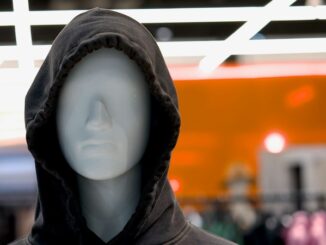
It’s a year since Foodstuffs announced it would trial facial recognition in 30 stores. Since then, writes Nicholas Dynon, increasing retail crime – and recidivism in particular – is advancing the facial recognition business case.
Twelve months ago, Foodstuffs announced it would look to conduct a 30-store trial of facial recognition technology following a significant increase in the rates of theft, burglary, robbery, assault, and other aggressive, violent and threatening behaviour across its stores.
The 23 November 2022 announcement stated that serious incidents, theft, burglary, robbery, assault, and other aggressive, violent, and threatening behaviour in Foodstuffs North Island stores in that year were up 31% on the previous year. Serious incidents in stores were up 246% since 2020.
“Supermarkets are on the frontline of the rising trend of retail crime with our teams dealing with daily incidents of assault, aggression and theft,” Foodstuffs North Island CEO Chris Quin said at the time. “This is the concerning reality for our teams as the number of incidents in grocery stores has risen significantly since early 2020 to record levels this year.”
“Facial recognition technology is one of the only tools we’ve identified that could help us to proactively target and reduce theft, burglary, robbery, assault, and other aggressive, violent or threatening behaviour by repeat offenders,” said Mr Quin. “Facial recognition technology will only be used in our stores for this specific and limited purpose.”
View this article in the New Zealand Security Magazine December 2023 downloadable digital edition…
Interestingly, Foodstuffs pointed to the fact that its data showed repeat offenders as being responsible for almost a quarter of serious offending in its stores. Consequently, it was looking to facial recognition to protect its staff and customers from repeat offenders in particular.
The cooperative stressed that it had engaged heavily with the Office of the Privacy Commissioner (OPC) in relation to the trial.
For its part, the OPC highlighted that it had prompted Foodstuffs to “carefully consider whether the use of facial recognition technology was a necessary, proportionate, and effective response to harmful behaviour in Foodstuffs stores.” The OPC also stressed the importance of being transparent with shoppers about the use of facial recognition technology, and to proactively engage with stakeholders, including Māori.
“We recognise Foodstuffs has a responsibility to take steps to keep customers and staff safe,” stated the OPC. “However, it is not clear to our office how facial recognition technology is going to achieve this. As a result, we have been counselling caution given the privacy intrusive nature of facial recognition technology and the inaccuracy and profiling risks involved. “
One year on and an ongoing spate of retail crime isn’t doing the case for facial recognition any harm. According to Retail NZ’s Retail Crime Report 2023, out of 297 survey respondents, 92% of retailers had experienced some form of retail crime in the past 12 months. This is a significant increase on the previous survey in 2017 when the figure was 81%.
“We calculated that the cost of crime that people responded to in our survey is about $2.6bn per year,” Retail NZ CEO Carolyn Young told NZSM, “and that’s a cost to the economy, and at some level the consumer pays for it as well.”
“There’s a lot of work that retailers are currently doing to combat crime, but crime has escalated to a level that’s unprecedented,” said Ms Young.
Employers have a responsibility to comply with the Health & Safety Act, she said, and to do the best they can to ensure they’re providing a safe environment for their staff. But with retail crime and violence against retail staff continuing to increase, staff safety has become more challenging than ever.
“One of the things that we all expect in our jobs is that we can go to work in the morning, and we can come home at night. Unfortunately, in retail that’s not as easy as it sounds because of the aggressive behaviour we’re seeing in stores.”
She sees value in the creation of a sector-wide approach to the use of facial recognition and other proactive technologies capable of identifying a person who has previously committed retail crime or been trespassed from a store.
This would potentially echo the model upon which the Foodstuffs trial is based. whereby a camera is able to match an individual to a facial image stored in the system of a person who has already been trespassed due to recidivistic offending against the store. The person would be identified, and a security guard or member of staff notified immediately, allowing them to enforce the trespass notice prior to the person entering the store.
“A person may have been trespassed from a store, but they still keep coming back, and once someone is in the middle of your store it’s really hard to do something about it without creating a scene,” said Ms Young.
“The idea is that you’re turning away someone that shouldn’t be coming into your store in the first place, and only the people who you have a photo of because they’ve offended have been loaded into the system.”
According to Ms Young, retailers are generally reluctant to consider facial recognition technology and that it is likely to suit larger business due to the investment involved and complexities around privacy and data. There’s a number of businesses, she says, that are really interested to see how the trial with Foodstuffs goes so that they can then work out how they might implement the technology in their own business. It appears that Foodstuffs is blazing a trail.









